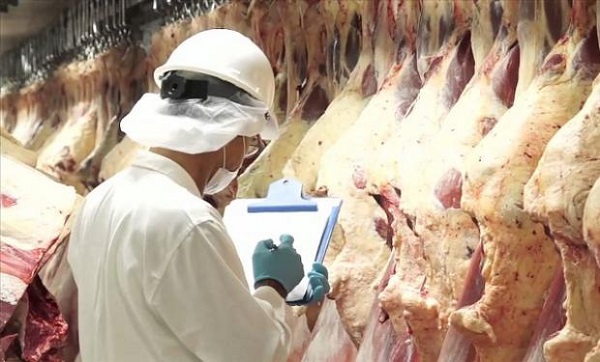

Export beef. Photo: Courtesy.
Paraguay reached record-breaking levels in beef cattle processing during the first two months of 2025. Local meatpacking plants processed approximately 422,000 head of cattle between January and February, marking a 29.6% increase compared to the same period in 2024, which was already a record year for the country’s meat production. This growth becomes even more significant when compared to the overall trend in Mercosur, where the bloc saw a slight contraction of 0.5% in slaughter activity, processing a total of 7.5 million head of cattle. Paraguay’s performance even surpassed Uruguay in bimonthly slaughter volumes, a rare achievement in the historical comparison between these two producer countries. This increase reflects both the expansion of Paraguay’s industrial capacity and the local availability of finished cattle.
Data from Faxcarne reveals a mixed outlook across the Mercosur meat industry. While Paraguay posted a sharp increase, Brazil — the bloc’s leading producer — recorded a 2% decline in slaughter, processing 4.5 million head of cattle. Argentina saw a 2.2% drop, with 2.1 million animals processed. Only Uruguay, aside from Paraguay, showed a positive trend, with a moderate 2.8% increase, totaling 409,000 head. These variations stem from several country-specific factors, including climate conditions, livestock cycles, sector policies, and international market access. The trend illustrates Paraguay’s ability to capitalize on growth opportunities while its main regional competitors have struggled to expand production.
In terms of exports, Mercosur as a whole experienced a 3% decline in volume during the first two months of 2025, with a total of 588,000 tons shipped abroad. This overall reduction was heavily influenced by Argentina’s sharp 31% drop in exports, from 130,900 to 90,000 tons. In contrast, Brazil and Uruguay each saw a modest 3% increase. Paraguay stood out with a significant 21% rise in exports, reaching 60,651 tons. This growth positioned the country as the top exporter in terms of percentage increase within the bloc, although it still trails Uruguay’s 66,392 tons in absolute terms. The discrepancy is attributed to factors such as domestic consumption and the types of beef cuts produced by each country’s industry.
Beyond volume, Paraguayan beef also experienced a notable increase in market value. According to industry data, Paraguay exported beef at an average price of USD 5,603 per ton — a 17% rise compared to the same period last year. This ranks Paraguay’s product as the second most valuable in the Mercosur bloc, behind only Uruguay, which reached USD 6,361 per ton (up 15%). Argentina, despite a sharp decline in volume, increased its export price by 31% to USD 4,929 per ton. Brazil followed with a 10% increase, reaching USD 4,977 per ton. On average, Mercosur beef appreciated by 16%, surpassing the global increase of 11% and achieving an average price of USD 5,190 per ton on the international market.
Follow us on Instagram.
Industry analysts attribute this overall price increase to a rebound in demand from key import markets, including China, which had previously shown signs of contraction. However, the most significant factor has been the renewed presence of the United States as a key player in the global beef trade. After a prolonged absence, the U.S. is once again setting the tone for red meat trade, driving up export values. This shift has particularly benefited Paraguay, which has successfully capitalized on growing global demand with simultaneous increases in both volume and value. The country’s geographic location, competitive production costs, and reputation for quality beef allow it to leverage this global interest in bovine protein, reinforcing its position as a relevant international supplier.
Paraguay’s strong performance in early 2025 sets a solid foundation for further growth in the global meat market. While the country still lags behind the bloc’s top exporters in total volume, its growth trajectory indicates significant medium-term potential. The challenge for the Paraguayan meat industry lies in sustaining this momentum while improving product value through market diversification, access to premium destinations, and differentiation based on sustainability and animal welfare. Paraguay’s ability to maintain its favorable value proposition amid rising U.S. demand represents a strategic opportunity to solidify livestock and meatpacking as key pillars of the country’s economic development.
El artículo en español aquí.
Esta web usa cookies.